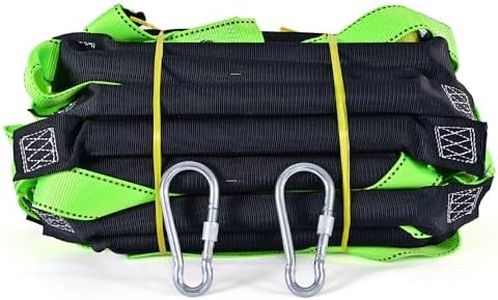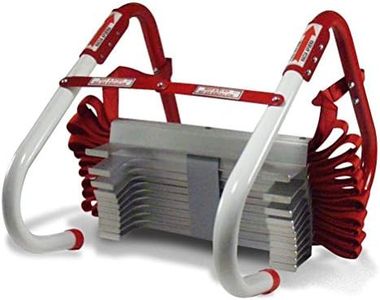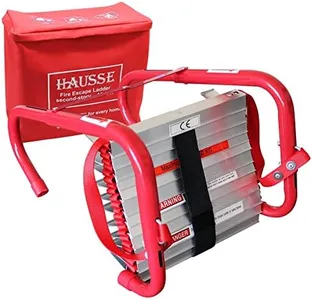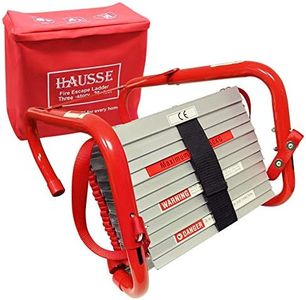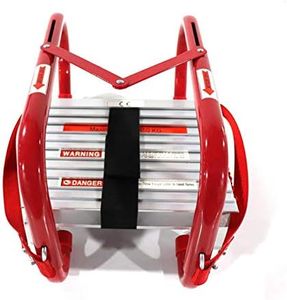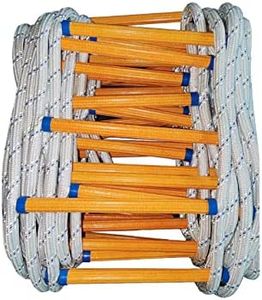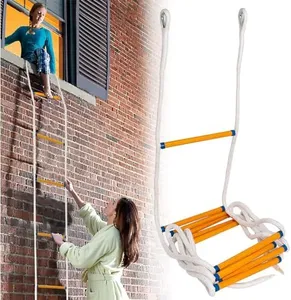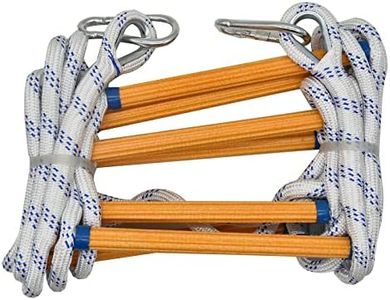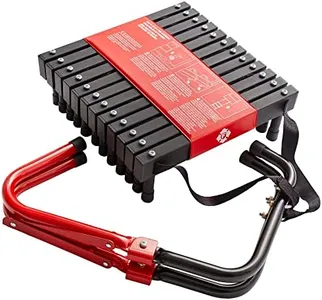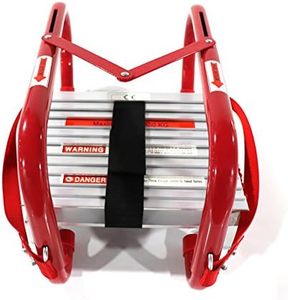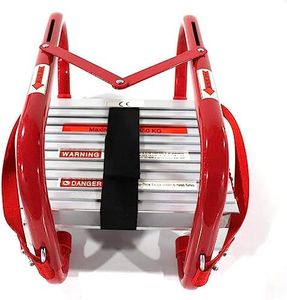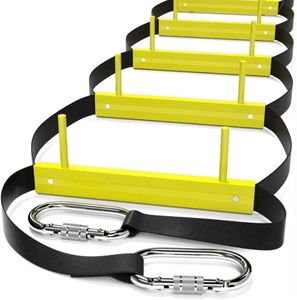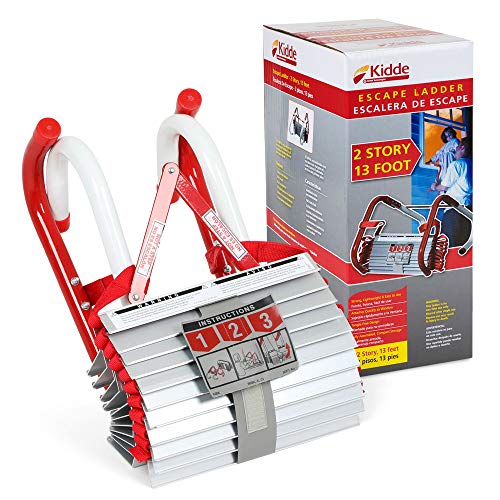10 Best Fire Escape Ladders 2025 in the United States
Our technology thoroughly searches through the online shopping world, reviewing hundreds of sites. We then process and analyze this information, updating in real-time to bring you the latest top-rated products. This way, you always get the best and most current options available.

Our Top Picks
Winner
Kidde Fire Escape Ladder, 2-Story Rope Ladder, Extends to 13-Feet, Anti-Slip Rungs
Most important from
16986 reviews
The Kidde Fire Escape Ladder is a 13-foot long, two-story rope ladder designed to provide a secure and swift exit in case of a fire. One of its notable strengths is its ease of use: it attaches quickly to most common windows, including casement windows, without requiring any assembly. This makes it highly practical during emergencies. Additionally, the ladder is flame resistant, sturdy, and can support up to 1,000 pounds, ensuring it can accommodate multiple users at once without a hitch.
The anti-slip rungs provide secure footing, which is essential for a confident descent. Furthermore, its compact, foldable design means it can be stored neatly and deployed without tangling, which is crucial for quick action during emergencies. The red nylon straps offer a secure grip, adding an extra layer of safety.
However, there are some drawbacks to consider. The ladder is a single-use product, meaning it must be discarded after one deployment, which could be seen as a downside if you’re looking for a reusable option. Moreover, while the load capacity is impressive, the product weight of 7.7 pounds could be slightly heavy for some users to handle easily. It also has specific window compatibility requirements (up to 11 inches deep and 16 inches wide), so it may not fit all window types. Despite these minor cons, the ladder’s strong construction and ease of use suggest it is a reliable safety tool for two-story homes.
Most important from
16986 reviews
Hausse Retractable 2 Story Fire Escape Ladder, 13 Feet
Most important from
1214 reviews
The Hausse Retractable 2 Story Fire Escape Ladder is designed for quick and safe evacuations from second-story rooms. It extends to 13 feet, providing sufficient length for typical two-story homes. With a weight capacity of up to 1000 pounds, it can support multiple people at once, which is vital during emergencies. The ladder is made of durable aluminum, ensuring its strength and longevity while being relatively lightweight at 11.3 pounds, making it easy to handle and deploy.
The slip-resistant rungs add an extra layer of safety, offering a steady foothold during descent. The retractable hooks securely attach to most window frames or sills, reducing the risk of slippage, although it’s crucial to fully extend them for optimal security. This ladder does not require any assembly or tools, making it user-friendly even in high-stress situations. The included red canvas bag allows for convenient storage under a bed or near a window, ensuring it’s accessible when needed.
The Hausse Retractable 2 Story Fire Escape Ladder is a reliable and practical choice for emergency preparedness, particularly for those living in multi-story homes.
Most important from
1214 reviews
Hausse Retractable 3 Story Fire Escape Ladder, 25 Feet
Most important from
1119 reviews
The Hausse Retractable 3 Story Fire Escape Ladder is a 25-foot aluminum ladder designed for emergency use in three-story buildings. It can handle up to 1000 pounds, making it suitable for multiple people or heavy loads. The ladder features slip-resistant rungs for added safety and hooks that securely attach to most window frames or sills. It's easy to deploy with no assembly required, making it a practical option for emergencies.
However, it’s recommended to replace the ladder every three years, which may be a drawback for some users. Weighing 16 pounds, it is relatively lightweight and comes with a durable red canvas bag for convenient storage under a bed or near a window. Its ease of use and fast deployment are major strengths, but its compatibility is mostly limited to windows, which might be an issue for balconies.
Additionally, being made of aluminum, it offers durability but could be prone to wear over time. This ladder is highly ranked in its category, making it a reliable choice for families looking for a fire escape solution.
Most important from
1119 reviews
Buying Guide for the Best Fire Escape Ladders
Choosing the right fire escape ladder is crucial for ensuring safety during an emergency. When selecting a fire escape ladder, it's important to consider various factors to ensure it meets your specific needs and provides a reliable means of escape. Here are some key specifications to consider and how to navigate them to find the best fit for you.FAQ
Most Popular Categories Right Now
